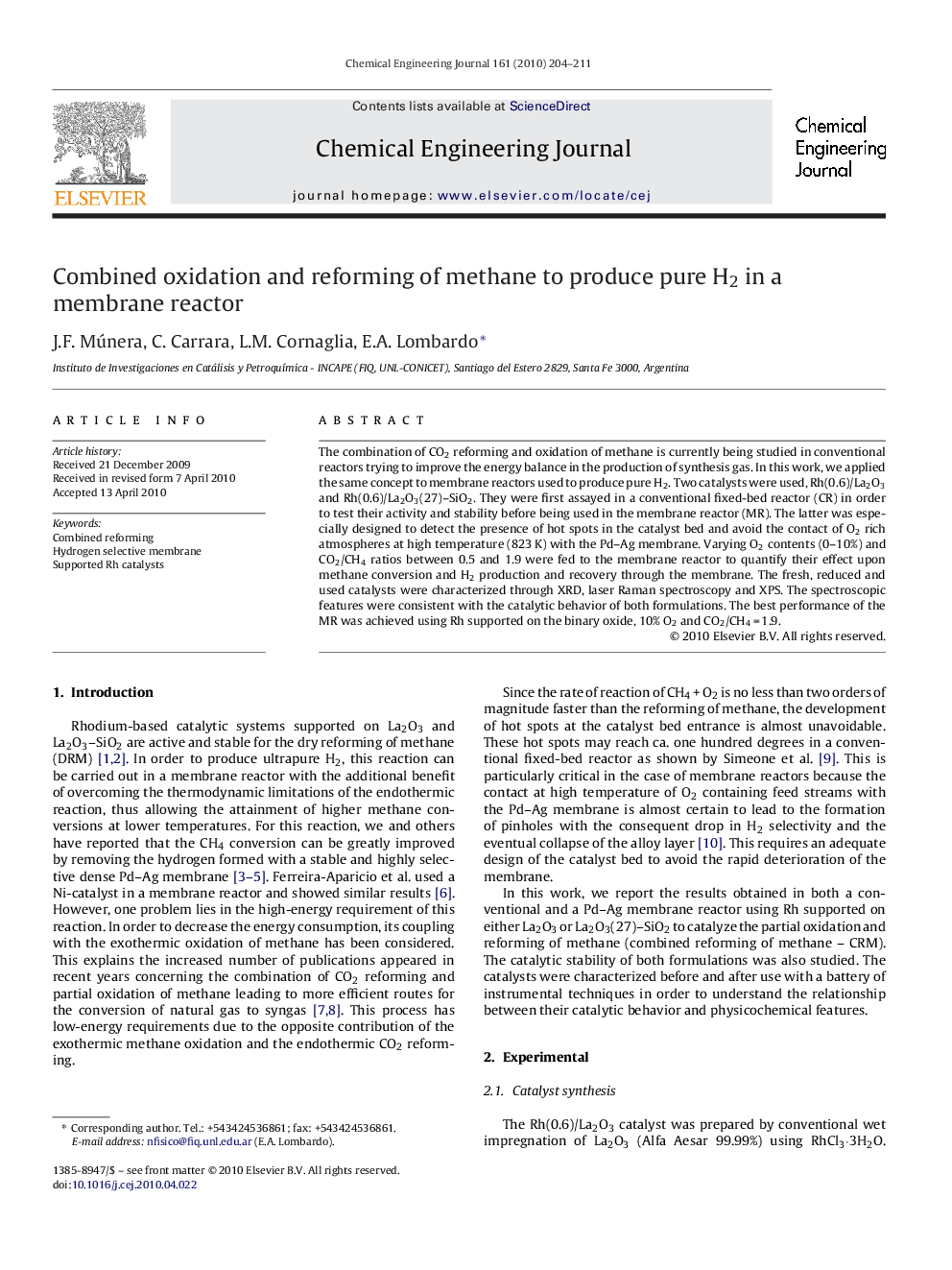| Article ID | Journal | Published Year | Pages | File Type |
|---|---|---|---|---|
| 151586 | Chemical Engineering Journal | 2010 | 8 Pages |
The combination of CO2 reforming and oxidation of methane is currently being studied in conventional reactors trying to improve the energy balance in the production of synthesis gas. In this work, we applied the same concept to membrane reactors used to produce pure H2. Two catalysts were used, Rh(0.6)/La2O3 and Rh(0.6)/La2O3(27)–SiO2. They were first assayed in a conventional fixed-bed reactor (CR) in order to test their activity and stability before being used in the membrane reactor (MR). The latter was especially designed to detect the presence of hot spots in the catalyst bed and avoid the contact of O2 rich atmospheres at high temperature (823 K) with the Pd–Ag membrane. Varying O2 contents (0–10%) and CO2/CH4 ratios between 0.5 and 1.9 were fed to the membrane reactor to quantify their effect upon methane conversion and H2 production and recovery through the membrane. The fresh, reduced and used catalysts were characterized through XRD, laser Raman spectroscopy and XPS. The spectroscopic features were consistent with the catalytic behavior of both formulations. The best performance of the MR was achieved using Rh supported on the binary oxide, 10% O2 and CO2/CH4 = 1.9.
